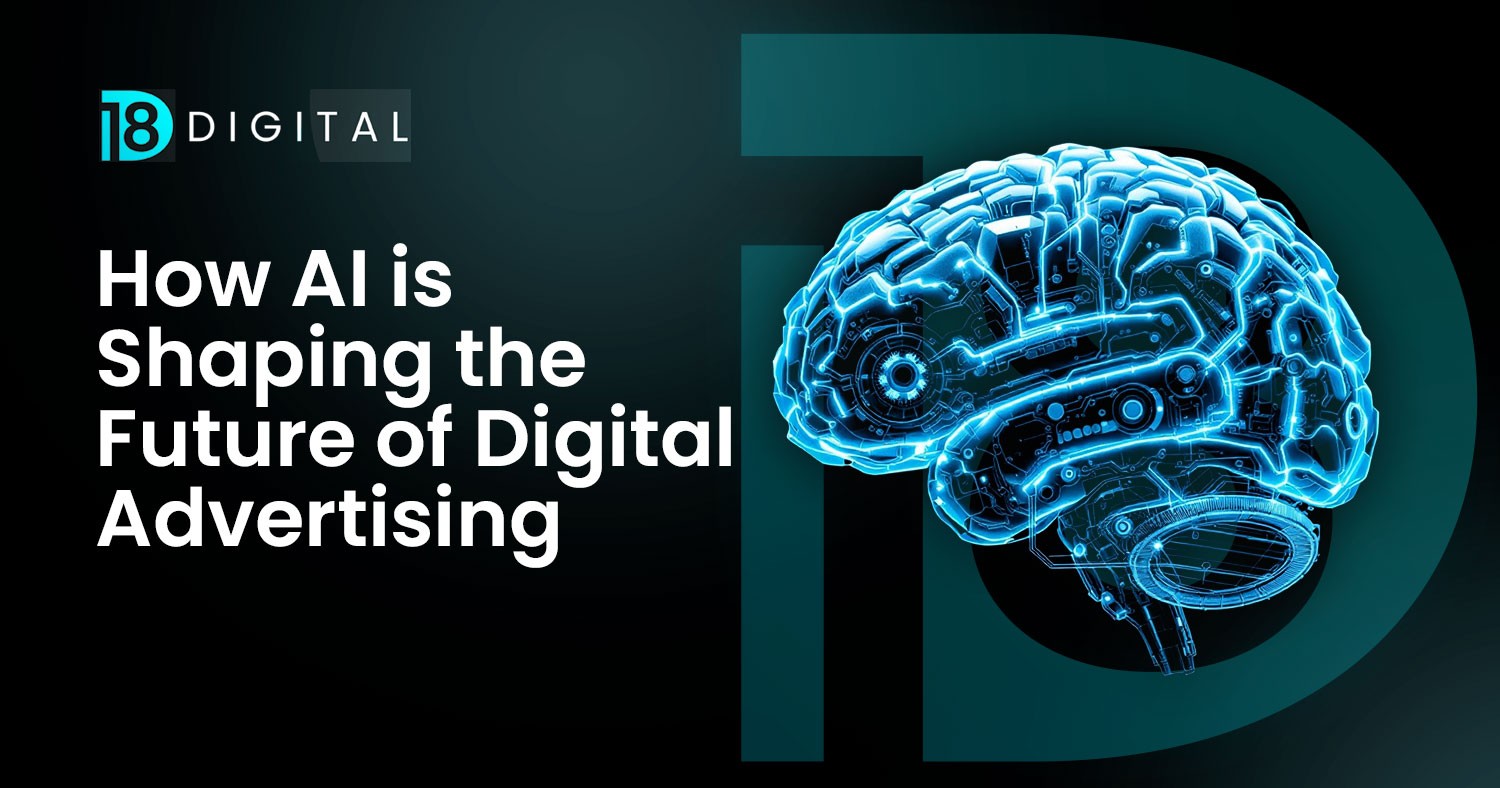Artificial Intelligence (AI) is transforming the world of digital advertising by automating tasks, enhancing targeting, and optimising ad performance in real time. As AI technologies continue to advance, they allow advertisers to deliver more personalised, relevant, and engaging ads to users, all while maximising return on investment (ROI). The future of digital advertising is increasingly being shaped by AI-powered tools that leverage machine learning, predictive analytics, and natural language processing (NLP) to create smarter and more efficient campaigns.
In this article, we’ll explore the future of AI in digital advertising, emerging trends, and how businesses can stay ahead by embracing AI-driven innovations.
How AI is Shaping the Future of Digital Advertising
1. Automated Ad Creation and Optimisation
AI is revolutionising the future of digital advertising by automating ad creation and optimisation. AI-powered tools can automatically generate ad copy, headlines, and creatives based on user data, previous campaign performance, and best practices. For example, platforms like Google Ads offer Responsive Search Ads, where AI tests different combinations of headlines and descriptions to identify the best-performing ad variations.
AI can also optimise ads in real time by analysing performance metrics such as click-through rates (CTR), conversions, and cost-per-click (CPC). Machine learning algorithms continuously learn from user interactions and adjust ad copy, targeting, and bids to enhance performance.
For instance, an AI tool might detect that a particular ad variation is generating higher conversions for a specific audience segment and automatically prioritise that version to maximise results. This level of automation reduces the need for manual intervention, allowing marketers to focus on strategic decision-making while AI handles optimisation.
2. Predictive Analytics for Ad Targeting
AI is transforming ad targeting by using predictive analytics to forecast which audiences are most likely to engage with ads or convert into customers. Predictive models analyse past behaviour, demographic data, and engagement history to anticipate future actions, helping advertisers deliver highly targeted ads.
For instance, AI-powered platforms like Facebook Ads use machine learning to predict which users are most likely to interact with specific ads based on their browsing habits, purchase history, and previous interactions with similar products. This allows businesses to allocate their ad spend more effectively by focusing on users who are most likely to convert.
Predictive targeting also helps with lookalike audiences, where AI identifies users who resemble a business’s best customers and targets them with personalised ads. By predicting which users will respond positively to an ad, AI-driven targeting increases relevance and ROI.
3. Real-Time Ad Personalisation
Personalisation has become a crucial element of effective digital advertising, and AI is enabling real-time personalised ads based on individual user behaviour. AI-driven platforms can analyse user data—including location, browsing activity, and purchase history—in real time to serve tailored ads that are highly relevant to each user’s preferences.
For example, a travel company might use AI to display ads featuring flight deals to users who recently searched for holiday destinations. AI tools can dynamically update ad content based on user behaviour, recommending products that users have previously viewed or offering personalised discounts to encourage purchases.
This level of personalisation improves engagement and conversion rates by delivering ads that are aligned with the user’s current needs and interests.
4. AI-Powered Programmatic Advertising
Programmatic advertising automates the buying and selling of ad space in real time, using AI to optimise bids, placements, and targeting. AI-driven real-time bidding (RTB) platforms analyse large amounts of data to make instant decisions about which ads to display, to which users, and at what price.
AI-powered programmatic platforms can manage large-scale ad campaigns across multiple channels—such as display, video, and social media—while continuously optimising for performance. By automating the bidding process, AI ensures that ads reach the right audience at the right time, maximising visibility and reducing wasted ad spend.
In the future, programmatic advertising will become even more sophisticated, with AI incorporating more granular targeting and contextual data to deliver highly personalised and effective ads at scale.
Emerging Trends in AI-Driven Digital Advertising
1. Conversational Ads and Chatbots
AI-powered chatbots are becoming an integral part of digital advertising, enabling conversational ads that allow users to interact with ads in a chat-like format. These ads are gaining popularity on platforms like Facebook Messenger, WhatsApp, and Instagram Direct. Conversational ads enable users to ask questions, receive product recommendations, and even make purchases directly within the ad experience.
For instance, a user might see an ad for a new clothing line and interact with a chatbot to get sizing recommendations or learn more about specific products. By integrating chatbots into ads, businesses can engage customers more interactively, creating a seamless journey from discovery to purchase.
As conversational ads evolve, AI will enhance their ability to provide personalised, real-time recommendations based on each user’s preferences and past behaviour.
2. Voice Search Ads
With the rise of voice search through smart speakers and voice assistants, voice-based ads are becoming a significant trend in digital advertising. As more users rely on voice assistants to search for products, make purchases, or request recommendations, advertisers must optimise their content for voice search and tailor ads to voice interactions.
AI-powered voice search ads will focus on conversational queries and deliver direct, relevant responses. For example, a user might ask, “What’s the best coffee maker for under £100?” and receive a voice ad highlighting a product that matches their query. As voice search continues to grow, businesses will need to adapt their strategies to how users engage with voice-activated devices.
3. AI-Driven Video Advertising
Video remains one of the most engaging formats for digital advertising, and AI is enhancing both video ad creation and targeting. AI tools can automatically create video ads by analysing content and selecting the most engaging visuals, music, and transitions to capture viewers’ attention.
Additionally, AI improves video ad targeting by analysing user behaviour and delivering personalised video ads to the right audience. For instance, AI can determine the type of video content a user prefers—whether it’s product demos, tutorials, or lifestyle videos—and serve ads that match their interests.
AI will also enable more interactive and shoppable video ads, where users can click on products featured in the video to make purchases directly. This seamless integration of content and commerce will boost engagement and conversions in the future of digital advertising.
4. AI for Data Privacy and Compliance
As AI becomes more prevalent in digital advertising, ensuring data privacy and compliance with regulations like GDPR will be crucial. AI-powered tools are being developed to help businesses manage and protect customer data, ensuring that advertising campaigns adhere to privacy laws while still providing personalised experiences.
In the future, AI will play an even more critical role in balancing the need for personalised advertising with the demand for data privacy. AI tools will help businesses anonymise user data, secure sensitive information, and ensure consent is obtained before using customer data for targeting purposes.
The Benefits of AI in Digital Advertising
1. Improved Efficiency and Automation
AI allows advertisers to automate many aspects of campaign management, from ad creation and bidding to targeting and optimisation. This automation reduces the manual effort required to manage large-scale campaigns, allowing marketers to focus on strategy and creative direction. By automating time-consuming tasks, AI helps businesses run more efficient and effective campaigns at scale.
2. Enhanced Personalisation
Personalisation is vital for successful digital advertising, and AI takes personalisation to the next level by delivering real-time, tailored ads based on user behaviour and preferences. AI driven targeting ensures that users see ads relevant to their needs, improving engagement, click-through rates, and conversions. Personalised ads resonate more with users, increasing the likelihood of action.
3. Better ROI and Cost Savings
AI’s ability to optimise bids, adjust targeting, and personalise ads ensures businesses get the most value from their advertising budget. By focusing on high-intent audiences and automating real-time adjustments, AI reduces wasted ad spend and improves ROI. Advertisers can reach the right audience at the right time, with the right message, leading to higher conversion rates and better campaign performance.
4. Data-Driven Decision Making
AI provides real-time data analysis and actionable insights to guide decision-making. Whether it’s identifying which ad variations perform best or predicting which audience segments are most likely to convert, AI helps businesses make data-driven adjustments to improve campaign outcomes. This continuous optimisation ensures that digital advertising remains effective and aligned with business goals.
Best Practices for Embracing AI in Digital Advertising
1. Start with High-Quality Data
AI relies on data to make accurate predictions and optimisations, so it’s essential to start with high-quality, well-organised data. Ensure you’re collecting data from various sources— such as website analytics, CRM systems, social media platforms, and customer interactions —so AI can build a complete picture of your audience’s behaviour and preferences.
2. Combine AI with Creative Strategy
While AI can automate many aspects of digital advertising, human creativity remains essential for crafting compelling ad copy, visuals, and messaging. Combine AI-driven targeting and optimisation with a strong creative strategy to deliver ads that emotionally resonate with your audience.
3. Test and Optimise Continuously
AI enables continuous testing and optimisation, so it’s important to monitor campaign performance regularly and make adjustments based on data insights. Use AI-powered tools to run A/B tests, analyse results, and refine ad targeting, messaging, and bidding strategies to achieve better results.
4. Stay Up to Date with AI Innovations
As AI technologies continue to evolve, staying ahead of emerging trends in digital advertising is vital. Keep an eye on developments in AI-powered tools, voice search ads, conversational marketing, and data privacy to ensure your advertising strategies remain competitive and compliant with industry standards.
Challenges of AI in Digital Advertising
While AI offers numerous advantages, there are challenges to consider:
1. Data Privacy Concerns
As AI uses vast amounts of user data for targeting and personalisation, ensuring data privacy is critical. Businesses must comply with data protection regulations and handle customer data responsibly.
2. The Learning Curve
Implementing AI-driven tools may require a learning curve, as marketers need to understand how to interpret AI-generated insights and integrate them into their overall strategy.
Conclusion
AI is poised to play a defining role in the future of digital advertising, driving greater efficiency, personalisation, and ROI. From automated ad creation and predictive targeting to real-time optimisation and programmatic advertising, AI-powered tools are enabling businesses to deliver more relevant, engaging ads to their audience. By embracing AI-driven innovations and staying ahead of emerging trends, businesses can create smarter, more impactful advertising strategies that drive results in an ever-evolving digital landscape.




